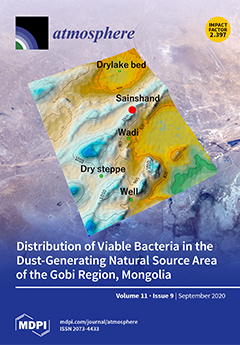Air pollution can increase the morbidity and mortality of cardiovascular and cerebrovascular diseases, but there are few related studies in counties and cities with serious pollution in China. China is at a critical stage of environmental pollution control. Assessing the health impact of PM
2.5 (particulate matter with a diameter equal or lower than 2.5 micrometers) on the death toll from cardiovascular and cerebrovascular diseases in heavily polluted counties and cities is of great importance to the formulation of air defense policies related to PM
2.5. Generalized additive models (GAMs) were used to analyze the effects of PM
2.5 exposure on the death toll of circulatory system diseases in 16 districts, counties and cities in Shijiazhuang from 2014 to 2016 after controlling the long-term trend of the time series, seasonal effects, holiday effects, air temperature, relative humidity and other factors. The average PM
2.5 concentration was 121.2 ± 96.6 μg/m
3; during the corresponding period, the daily mean mortality of circulatory system diseases in Shijiazhuang was 4.6 ± 4.7. With the increase of PM
2.5 by 10 μg/m
3, the risk of total death from circulatory system diseases with a lag of two days (lag02) increased by 3.3‰ (95% confidence interval (CI): 1.0025, 1.0041). The relative risk (RR) of the effect of PM
2.5 exposure on the death toll of the circulatory system in Shijiazhuang is consistent with the spatial distribution of the PM
2.5 concentration and the mortality of circulatory system diseases: the RR of the eastern plain with heavy pollution and a relatively dense population is high, while the RR of the western mountainous area with relatively light pollution and a relatively sparse population is low. For every 10-μg/m
3 increase of PM
2.5, the risk of the increasing death toll from circulatory system diseases in Luancheng of the eastern plain is the highest at 11.9‰ (95% CI: 1.0071, 1.0168), while the RR of Pingshan of the western mountainous area is the lowest at 2.1‰ (95% CI: 0.9981, 1.0062). Conclusions: Based on the epidemiological analysis and GAMs model, after controlling for other confounding factors, PM
2.5 exposure increased the death risk of the circulatory system in Shijiazhuang, and the risk is higher in heavily polluted plain areas. It provides a scientific basis for formulating scientific air pollution prevention and control policies and provides a reference for improving the prevention awareness of sensitive groups.
Full article





